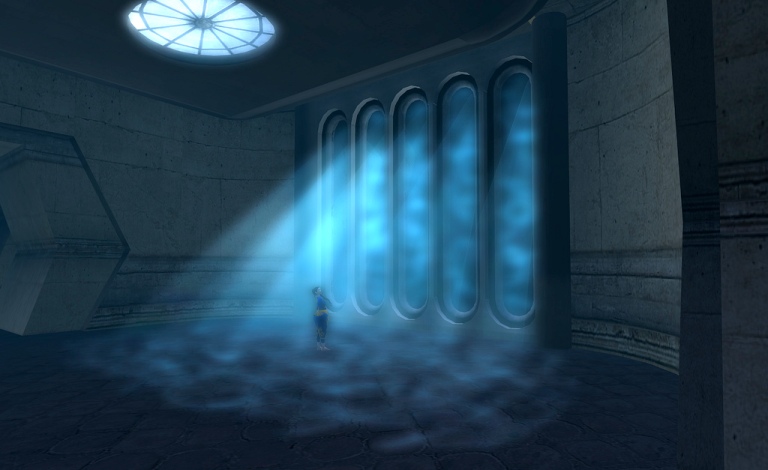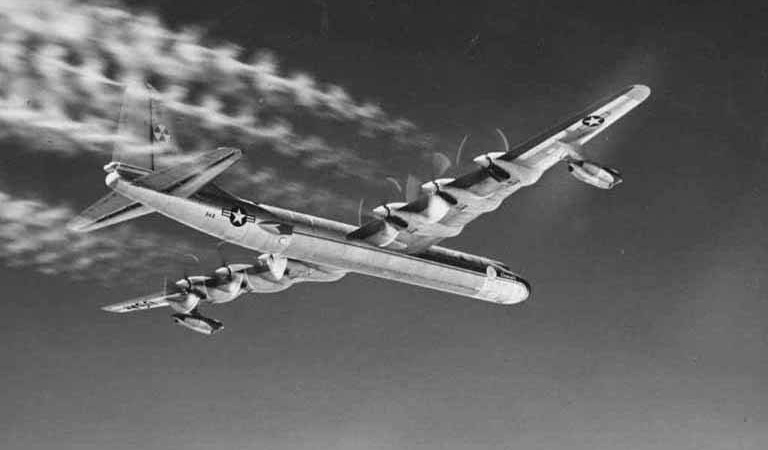Last week, Lockheed announced it had a small team working on what it calls a Compact Fusion Reactor. Fusion is the opposite of fission that’s used in nuclear plants today; it can produce enormous amounts of energy; the fuel for itis cheap and plentiful; a small fusion engine would solve the world’s energy problems. I first wrote about fusion energy maybe 30 years ago; the saying then was “fusion is always 20 years away.” Lockheed now says they’re “as little as 10 years” away. So my fusion-knowledge is clearly out of date. I asked my friends and colleagues, Geoff Brumfiel who has written a lot about fusion, and Sharon Weinberger who writes about national security and technology, to explain what Lockheed could possibly be talking about.
 Ann: So Lockheed is saying its airplanes could run on fusion, or something like that. How can aircraft run on fusion anyway? Given that fusion is what powers the sun and h-bombs, wouldn’t that be a little dangerous? or just hot? Anyway, didn’t the Starship Enterprise already run on fusion? While I pondered these questions, Geoff sent along the Lockheed press release which ends with, “Do you have any questions?” Well, Geoff, do you? I trust they’re better than mine.
Ann: So Lockheed is saying its airplanes could run on fusion, or something like that. How can aircraft run on fusion anyway? Given that fusion is what powers the sun and h-bombs, wouldn’t that be a little dangerous? or just hot? Anyway, didn’t the Starship Enterprise already run on fusion? While I pondered these questions, Geoff sent along the Lockheed press release which ends with, “Do you have any questions?” Well, Geoff, do you? I trust they’re better than mine.
Geoff: To really know whether a fusion device like this will work requires a detailed understanding of the technology and geometry of the machine. And because the interactions of the fuel inside a machine like this are so complex–you also have to review some real data. To say whether this new concept will work, I’d want to ask lots of questions along those lines.
And yet, I don’t want to ask those questions, because narratively this fits the classic mold of a fusion machine that won’t work (or at least won’t work without a lot of money):
- It’s being developed by people outside the field of fusion research.
- They think they can make it compact, which is notoriously hard to do.
- And they’re promising to do it quickly, but they haven’t done it yet.
I’ve seen this story too many times before: In roughly chronological order, we have the Huemul Project, the British Z-pinch, The Farnsworth Fusor, Cold Fusion, The Polywell Machine, Bubble Fusion, General Fusion… Just writing that list makes me feel tired.
Ann: So because this is a classic failure story, does that mean it won’t happen this time?  Geoff: That is the maddening thing about covering fusion, you just never know. There are a lot of ideas for how to crack the fusion nut, but it’s a very tough nut to crack. So to really do your due diligence, you’d have to ask all those hard questions. You’d have to scratch your head. And at the end, you’d probably have to settle for a very unsatisfying “maybe.” Dan Clery at Science has done some of this work in this story and updated it in this report.
Geoff: That is the maddening thing about covering fusion, you just never know. There are a lot of ideas for how to crack the fusion nut, but it’s a very tough nut to crack. So to really do your due diligence, you’d have to ask all those hard questions. You’d have to scratch your head. And at the end, you’d probably have to settle for a very unsatisfying “maybe.” Dan Clery at Science has done some of this work in this story and updated it in this report.
Ann: And Mitch Waldrop at Nature, the same. So we’ll refer inquiring minds to Clery and Waldrop for well-researched, clearly-explained answers to the hard questions.
Geoff: I could add some reasons this particular approach looks tricky, at least to my untrained eye, but that would probably be too boring for this conversation.
Sharon: I would like to bring up another question that is not being addressed. Why would the world’s biggest defense company, Lockheed Martin, and in particular, its secretive Skunk Works unit, make this announcement? Skunk Works made its name developing secret aircraft for the CIA and Air Force, like the U-2 spy plane and the SR-71 Blackbird. It’s not really a science lab, and it normally focuses on prototypes that have an immediate military application.
Ann: I’m sorry, I have to digress: Is the SR-71, the Stealth bomber? Yes? Oooh no, but it’s just as creepy-looking. Anyway, Sharon, as you know, the Stealth bomber can be added to your Skunk Works list.
Sharon: Geoff, let’s say Lockheed has really cracked the fusion code. What would this fusion reactor look like? The press articles quoting Lockheed officials say that this reactor could fit on the back of a truck, or on a ship. But how much shielding would it require? Meaning, could you really put on a truck safely? Or on a ship?
Geoff: Well the claim is that it might be a power system for an aircraft, and a nuclear-based power system would provide a huge military advantage. Such an aircraft could fly indefinitely, without refueling. In the 1950s the Americans were trying to develop a fission-powered bomber, they got as far as putting a reactor in a chassis and flying it around (the Convair NBH-36H). The Russians went even further and actually BUILT a nuclear-powered bomber.
The problems were that the reactor was too heavy, so you couldn’t carry a lot of bombs. Plus, your pilots got badly irradiated. Eventually, the development of mid-air-refueling technology negated the need for long-duration nuclear-powered bombers.
Fusion still produces a lot of radiation when the reactor is running. So a fusion reactor in a manned aircraft seems completely impractical. But could the combination of unmanned aerial vehicle and fusion lead serve a military purpose? Perhaps. What could you do with a drone that never had to land?
Ann: You could do a lot of spying and a lot of bombing. But now we’re in the Land of Speculative Military Applications. And just because Lockheed might have military applications in its schemes for fusion implies nothing about the reality of its fusion attempts. Sharon, what do you think doesn’t smell right?
Sharon: Well, one way to look at this is that it could be a genius ploy for free publicity. Lockheed’s announcement has generated coverage in everything from the Washington Post to the Economist.
I have one related slightly off-the-wall theory. The Pentagon is sponsoring a competition for a new bomber. A lot of the work surrounding it is classified, so the companies involved — Lockheed Martin, Boeing and Northrop Grumman — can’t exactly publicly tout what they’ve got. So, instead, they are advertising themselves: their brand name. For example, Northrop Grumman has a huge advertisement right now at the Pentagon metro stop — not for a new bomber, but for their B-2 stealth bomber, which was first produced in the 1980s. So, maybe this is Lockheed’s way of getting attention for the Skunk Works “brand name.”
The drawback of this approach, however, is that it could also damage Skunk Work’s reputation, which has a long and storied history of developing very effective aerospace designs, and not proposing technologies that require “unobtainium” to work. If this fusion project really turns out to be a lemon — and that does seem to be the early consensus from the science press — it could backfire.
Geoff: I like that theory, and I’d add one little caveat. Tom McGuire, the gentleman who is supposedly heading up the Lockheed effort, may be very sincere in his belief that this can work. Many very smart people have thought hard about fusion, and many are true believers in the approach they have studied. So I don’t want people to think the Lockheed project is an outright con.
Sharon: I don’t think it’s a con either, but I do think it’s overly optimistic.
Geoff: Actually, that may be another “genius” aspect of this device as a PR move–it probably will be very hard (and expensive) to show it can’t work.
Ann: I find the Sharon/Geoff genius PR theory utterly convincing. I mean that. I’d read both the Clery and the Waldrop stories on these new attempts to create fusion and as Geoff says, they say that the attempts are nowhere near reality but also not stark raving mad either. Maybe Lockheed is just announcing it’s nowhere near reality but also not stark ravers and is working on it. So, do we believe they have a reasonable shot at this or not? Vote: yes, no.
Sharon: I’m guessing Lockheed’s “fusion reactor” will simply fade away, joining the long list of other attempts at fusion that Geoff outlined at the start.
Geoff: It won’t achieve lemon status, it will just fade into the background.
Sharon: At this rate, couldn’t you just assert that you, Ann Finkbeiner, are going to build a fusion reactor “within 10 years.” That’s what everyone else does.
Ann: I will! I will! Dear DARPA, send me an application please right now please thank you.
Geoff: Yes go for it! I’m happy to be co-PI.
Ann: And Sharon can be another co-PI. And dear DARPA, sweetie, lovey, we’re so golden. Wait. Maybe it’s DoE I should be applicating. Dear DoE, etc., and we’re as little as 10 years away or, you know, maybe 20.
________
Sharon Weinberger writes about national security, specializing in science and technology, and has held more fellowships than you can shake a stick at. She is the author of two books, Imaginary Weapons and A Nuclear Family Vacation, and is finishing a third, a history of DARPA, the Defense Advanced Research Projects Agency, which should help us in our application.
Geoff Brumfiel has been a science correspondent for National Public Radio in Washington DC since 2013. For 12 years, he was senior reporter at Nature on energy, space, climate, and physical sciences. He won the 2013 Association of British Science Writers award for news reporting on the Fukushima nuclear accident. His Master’s thesis at Johns Hopkins University was on the history of magnetic fusion.
________
Photos: “Fusion Reactor” by Annabeth Robinson, via Flickr; Convair NB-36H airplane, the first aircraft to fly with an operating atomic reactor aboard, from the University of Washington Libraries Digital Collections, via Wikimedia
The Lockheed announcement gave so few details that I can’t judge it, but it seems like a fusion ( pun intended ) of many failed projects, including the one I worked on, https://en.wikipedia.org/wiki/Trisops . I later was a program manager for the Department of Energy Office of Fusion Energy and many such projects were brought to our attention. The physics engineering and economic problems of fusion power are daunting. I would really surprised of Lockheed could pull a solution out of their hat.
Curious… could they just be developing an engine and not a power generator? It may not be about turning magnets/turbines or how ever fusion reactors generator electricity, rather it’s just about taking air in, seeding with a catalyst of some sort and dumping out plasma.
Check out the project supported by Edward Teller (Dr. Doom): The Supersonic Low Altitude Missile (Project Pluto) in Wikipedia for another insane “Defense Industry” project. The Russians never developed an operational fission powered aircraft; although they also had a flying test reactor based on the TU-95 turboprop bomber.